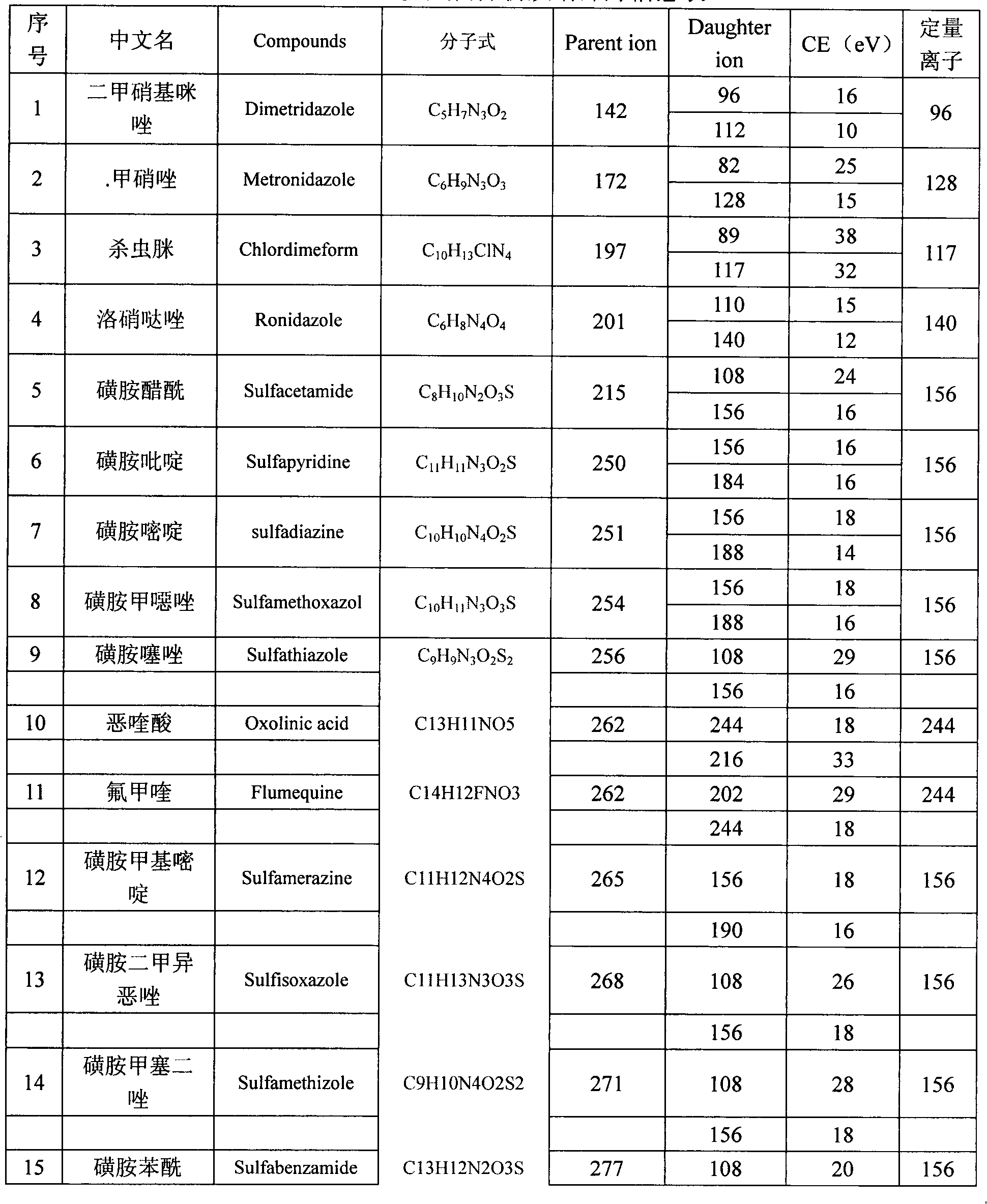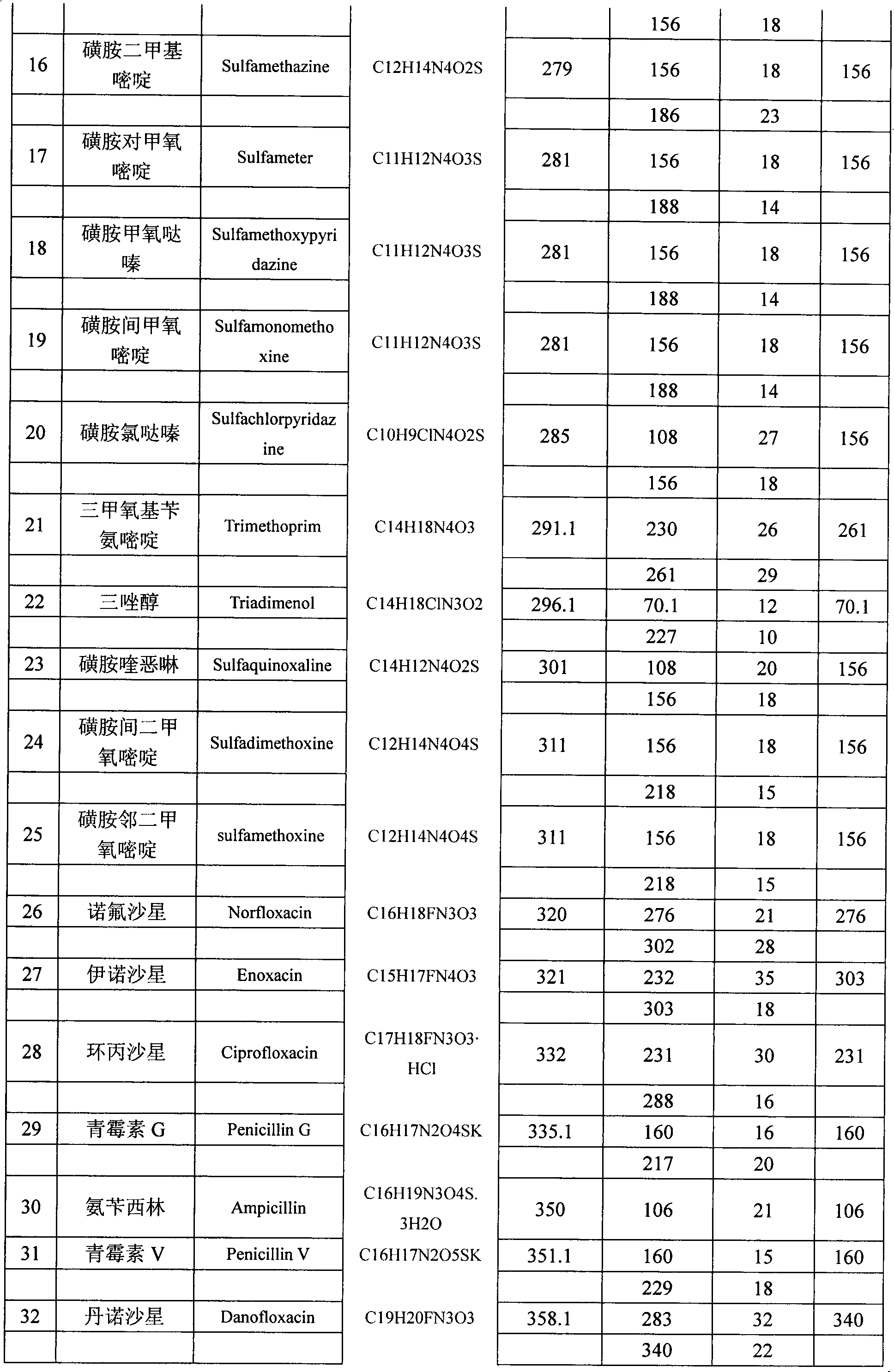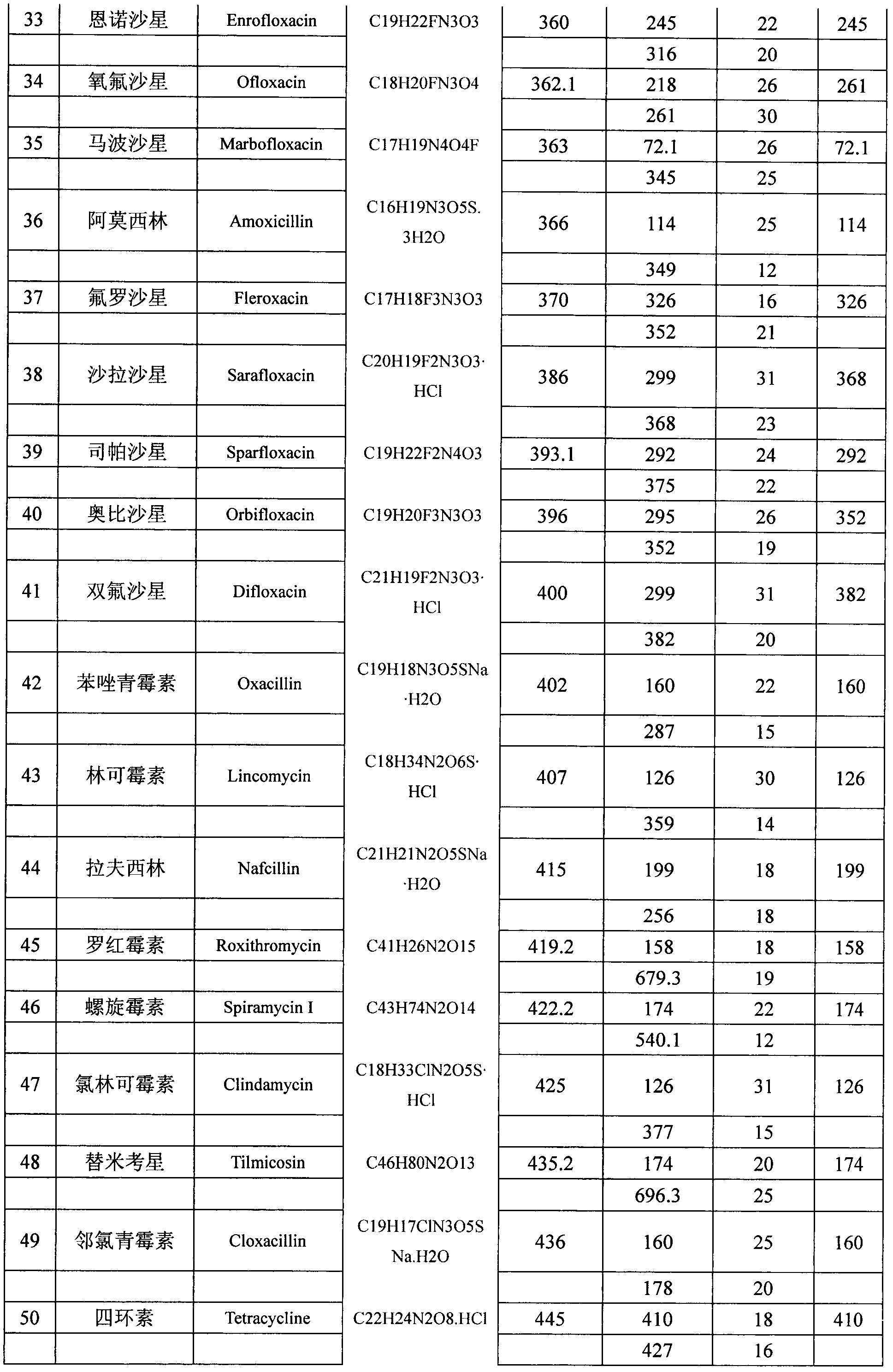Detection method of residual quantities of various veterinary drugs in culturing or slaughtering environment
A determination method and technology of veterinary drug residues, which is applied in the field of determination of various veterinary drug residues in the breeding or slaughtering environment, can solve the difficulties in instrument detection setting, different chemical properties, and it is difficult to use the same pretreatment method and instrument detection for antibiotics Methods and other issues
- Summary
- Abstract
- Description
- Claims
- Application Information
AI Technical Summary
Problems solved by technology
Method used
Image
Examples
example 1
[0014] Example 1 Detection of multiple veterinary drug residues in environmental water samples
[0015] Accurately take 100 mL of water sample filter paper into a clean glass Erlenmeyer flask, add 50 μL of mixed internal standard solution, add 50 mL of phosphate buffer solution, adjust the pH of the solution to 6.5, and vortex to mix. Use 6ml of methanol and 6mL of water to activate the OasisHLB column, pass the pH-adjusted sample solution through the column, and control the flow rate at 1-2d / s. After the flow is over, wash the centrifuge tube and the storage tube with 5mL of water and pass through the column. effluent. Under a negative pressure of 65kPa, vacuum dry for 10min, and finally elute with 6mL of methanol, collect the eluate in a 10mL test tube, dry it with a nitrogen blower at 45°C, and wash it with methanol+water (1+9v / v ) to 1.0 mL, pass through a 0.45 μm organic-phase nylon filter membrane into a sampling bottle for determination by liquid chromatography-mass sp...
example 2
[0016] Example 2. Detection of multiple veterinary drug residues in soil samples
[0017] Accurately weigh 10g (±0.05g) of the soil sample into a 500mL centrifuge tube, add 50μL of the mixed internal standard solution, add 200mL of phosphate buffer to adjust the pH of the solution to about 6.5, oscillate on the oscillator for 30min, filter the extraction solution In a clean 500mL Erlenmeyer flask. Use 6mL methanol and 6mL water to activate the Oasis HLB column, pass the filtered sample solution through the column, the flow rate is controlled at 1-2d / s, after the flow is over, wash the centrifuge tube and the storage tube with 6mL water and pass through the column. Under a negative pressure of 65kPa, vacuum dry for 10min, and finally elute with 5mL of methanol, collect the eluate in a 10mL test tube, dry it with a nitrogen blower at 45°C, and wash it with methanol+water (30+70v / v ) to 1.0 mL, pass through a 0.45 μm filter membrane into a sampling bottle for determination by li...
PUM
 Login to View More
Login to View More Abstract
Description
Claims
Application Information
 Login to View More
Login to View More - R&D
- Intellectual Property
- Life Sciences
- Materials
- Tech Scout
- Unparalleled Data Quality
- Higher Quality Content
- 60% Fewer Hallucinations
Browse by: Latest US Patents, China's latest patents, Technical Efficacy Thesaurus, Application Domain, Technology Topic, Popular Technical Reports.
© 2025 PatSnap. All rights reserved.Legal|Privacy policy|Modern Slavery Act Transparency Statement|Sitemap|About US| Contact US: help@patsnap.com



